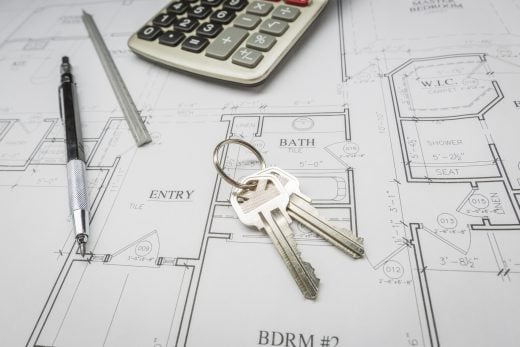Have you been considered making major renovations to your home or have you recently purchased an old property to renovate? Then you might need to acquire planning permission before you can begin such grand plans.
Having a successful planning application will add value to your home. The process to obtain a successful planning application can be tricky. Planning permission is the approval for a building project’s plans. This could range from anything, including an entirely new structure proposed to be built upon agricultural land through to a significant alteration to an existing building. Permission will be given and granted by the relevant local authority.
When applying for local planning permission there are various factors to take into consideration, from location to wildlife and even residents. If you are applying for local planning permission, here are a few things you need to know.
There Are Hidden Costs
During your planning stages regarding the finances needed for each project, take into consideration potential hidden costs that could occur, such as application fees. In most cases, when applying you will likely have to pay an application fee. Although this depends on some of the types of consent. For a listed building and planning permission for relevant demolition in a conservation area then no application fee is required.
Consolidate With The Local Residents
If the area you are looking to build or renovate a property on is relatively near other houses, you may encounter a few issues with the residents. Understandably, many would be concerned about the impact your renovation will have on their property. These concerns can include if your project will affect their view, impact the resale value of their property and its kerb appeal.
When looking to make renovations or a building in an area close by, take time to speak with the neighbours and detail your plans for space. Show them what they can expect from the project during the production stages through to completion. It will be much appreciated by them and can also be beneficial in your proposal.
Consider The Area Your Project Is Located
During the earlier stages of planning and development, there are often factors that you might not have considered. Whilst you may have considered the impact your project could have on plants and wildlife that surrounds the area, you may not have thought about the type of wildlife that lives close by. As such, you might not have considered surveying to see what wildlife might be affected by your proposed plans for development.
For instance, if where you are due to build or renovate is inhabited by bats, you might need a bat survey completed. There is legislation in place that dictates any structures or places where bats use as a shelter or for protection, are protected from damage or destruction, regardless of it is occupied or not. As such, if conducting bat surveys are something you might have missed, then firms such as Arbtech offers to carry out a bat survey. A licence to undertake work that may disturb or destroy a roost cannot be applied for until a full bat survey has been completed.
Outsource Expert Support For Your Application
If the project you are considering undertaking requires planning permission to complete, it might be worth investing in the services of a qualified and experienced architect or architectural designer. Using their wealth of experience, they will draw up the plans that you will need to use when applying for permission. In some cases, they might also be able to handle the planning process on your behalf. This extra service might already be included in the price of the package or it could be done for an additional fee – so it is worth checking before investing.
Possibility Of Appealing If Initially Declined
Unfortunately, not all planning permission applications submitted are successful. If your planning application is part of the small percentage of unsuccessful applications or if it has been approved but you are not happy with the conditions set, you can speak to your local planning authority. In some cases, you might be able to re-submit your application after amending it with the feedback provided from your previous application. It is important to note that submitting an amended application can often be done without you having to pay out extra costs.
However, if you feel as though the rejection of your initial application is unreasonable, then you can submit a planning appeal. These can be completed online, which is easily accessible through the Appeals Casework Portal. This portal is managed by the planning inspectorate. As you go through the portal, you will find guidance on how to make the right type of appeal before submitting it through the portal.
Extra Benefits Of Successfully Obtaining Planning Permission
After successfully obtaining planning permission, the development of the property must begin within three years. However, if you decide to sell the property within this timeframe, then the planning permission will remain with the house.
If you are selling the property within the three-year timeframe, informing potential buyers that there is planning currently available can add substantial value to the property. This is because potential buyers know that they can make renovations to the property, without having to go through the task of applying for planning permission.
Obtaining planning permission is no easy task, so be prepared to spend a considerable amount of time planning and preparing a solid application to submit. Ensure that you have covered all bases as much as possible. This includes ensuring that the designs you put forward are of great quality and are clear about the desired outcome. Additionally, it highlights any effect on the local habitat and wildlife, showcasing the findings of surveys completed, as well as how you intend to reduce the impact.
The more that you can include, and the greater the detail, the higher the chances of successfully obtaining planning permission the first time around. Whilst the percentage of successful applications are above 80%, there is still the chance of an unsuccessful application. As such, it is important to do as much as possible to ensure that you do not have to spend more time having to update and resubmit your application for planning permission.







